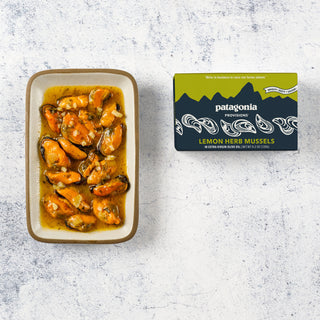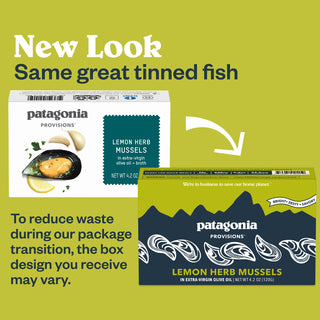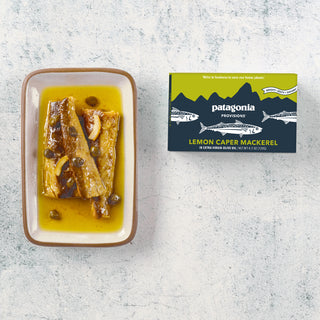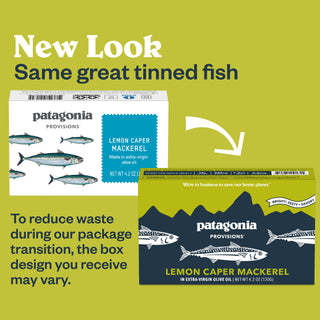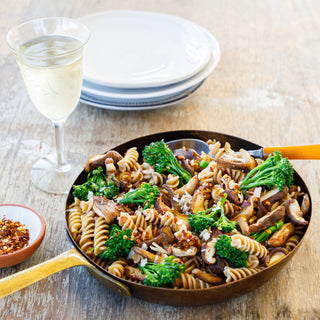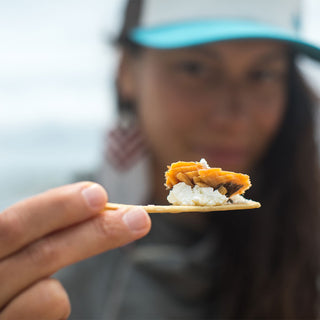
Wild Pink Salmon
Our pink salmon, the most abundant of all salmon species in the Fraser River system, comes from wild, self-sustaining runs off Lummi Island, Washington—no farms or hatchery stocks. These wild pinks are caught using reef nets, a solar-powered, selective-harvest technique that prevents bycatch and ensures the highest quality fillets. The result is delicious protein source that also helps protect the ocean ecosystem.
NUTRITION: A GIFT FROM THE SEA
Wild salmon is an excellent source of protein, leaner than untrimmed red meat. Each serving of our pink salmon contains 870 mg of omega-3 fatty acids, molecules that may benefit heart health.
Pink salmon, also known as humpback salmon, is naturally high in vitamin D (80% of the daily value per serving), a nutrient that boosts the immune system and regulates calcium absorption. We pack our pink salmon in organic extra-virgin olive oil, which contains monounsaturated fats and polyphenols, a class of plant compounds being studied for possible antioxidant and anti-inflammatory properties.
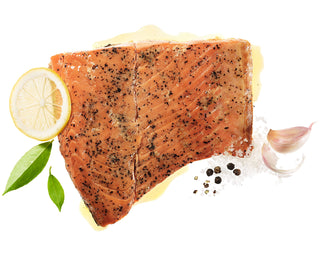
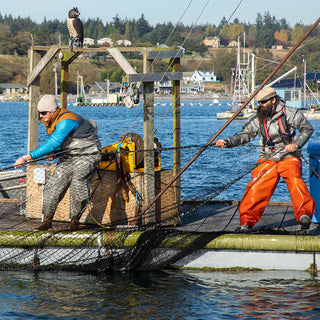
SOURCING: THE POWER OF PLACE
Place-based fisheries operate on the knowledge that every run, or stock, of wild salmon has evolved to return to the river of their birth to spawn. These fisheries respect this ancient cycle and work to preserve it.
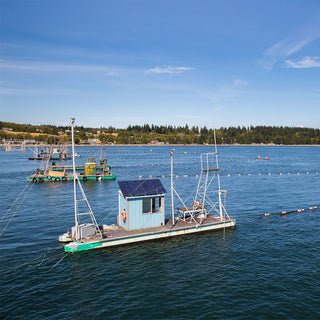

ENVIRO: THE WISDOM OF THE PAST
Our fishing partners employ a harvesting technique called reef netting. Developed centuries ago by tribes of the Salish Sea, including the Lummi, Saanich and Samish, reef netting makes it possible to target abundant runs of salmon and spare less vigorous stocks.
Here’s how it works: A large net is suspended between two anchored platforms, with lead lines extending outward (a).Migrating salmon are fooled by the lead lines into thinking they are approaching a reef and must ascend to the surface (b).Spotters in 20-foot towers (c) keep an eye out. If the fish are not the targeted species—like, say, the less abundant Chinook salmon—the net is not lifted and the fish swim on through. For the targeted species, like pink salmon, the fishers engage the net, using solar-powered winches (d) to lift the edges and trap the fish inside. The captured pinks are individually handled and iced immediately for top quality, and any accidental bycatch are released, alive, back into the water.
HISTORY: RESPECT FOR THE PINKS
For millions of years, salmon has played a vital role in the ecosystem, culture and economy of the Pacific—a role that’s now drastically diminished.
Over the past century, the runs of wild salmon that once stretched from Alaska to Southern California have been decimated by overfishing and industry, including open-water net-pen salmon farms that pollute the ocean.
The good news: While other species of wild salmon have struggled, pink salmon has thrived in the Pacific Northwest. But they’re often underrated and handled improperly by commercial fisheries, so quality and flavor suffer. “They have a more subtle flavor profile [than other salmon], so they’re not treated well, and when they’re not treated well … it’s a downhill spiral,“ says Riley Starks, co-founder of our fishing partners, Lummi Island Wild. By harvesting and packing pink salmon with care, we can honor this delicious mild fish and enjoy it to the fullest.
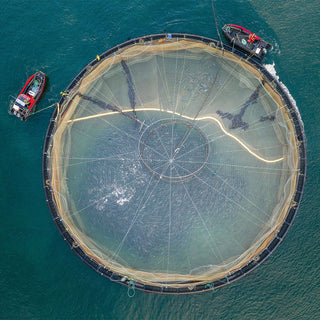
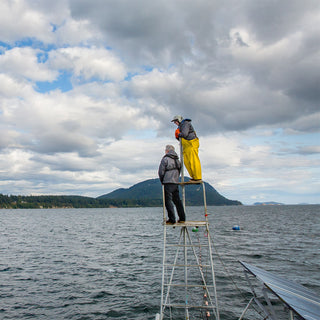
PARTNERS: GUIDED BY SCIENCE
The net-pen failure at Cooke Aquaculture’s Atlantic salmon farm off Cypress Island, 70 miles north of Seattle, resulted in more than 260,000 non-native, domesticated Atlantic salmon escaping into Puget Sound. Neither the government nor Cooke Aquaculture had an adequate emergency response or recovery plan in place. Every escaped fish tested had piscine reovirus (PRV), a highly contagious, exotic virus that can infect and harm native wild salmon and steelhead. Photo courtesy of Wild Fish Conservancy
We’ve put in years of research and tapped the guidance and wisdom of experts to find sustainable commercial salmon fisheries. Our stringent sourcing practices were developed in partnership with the Wild Fish Conservancy.
All Provisions salmon must be harvested from wild, self-sustaining populations rather than hatchery stocks or net-pen fish farms. We only work with place-based fisheries where sound science can assess fish population status and needs. These fisheries also use techniques, location or timing to minimize bycatch. Preference is given to fisheries that maximize eating quality through careful, individual handling of fish, and that support the health of the environment and human communities. Finally, all Provisions salmon are marketed with full transparency, including packaging that names the species, harvest location and type of gear used.


